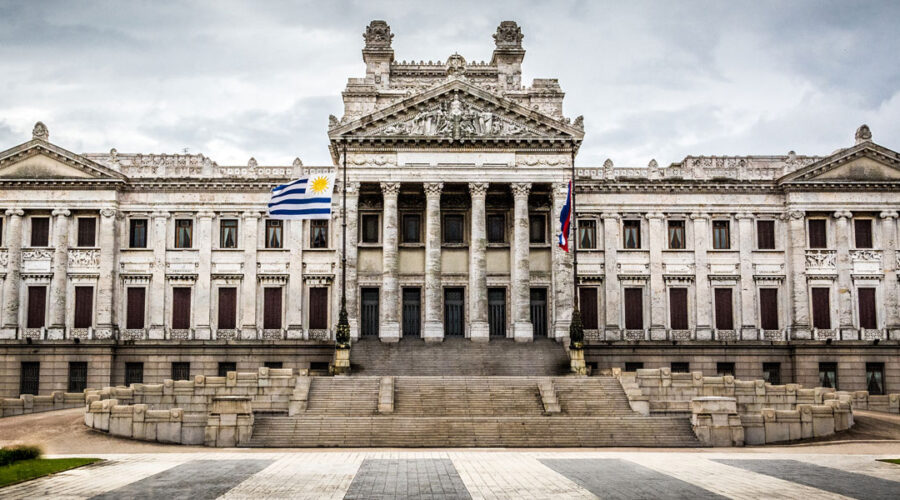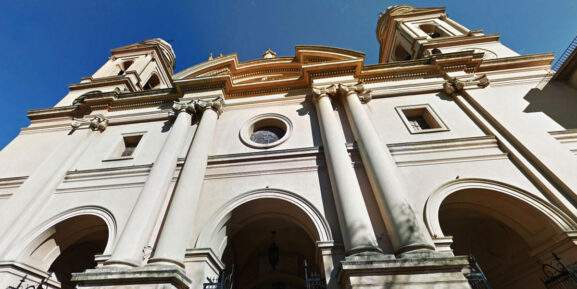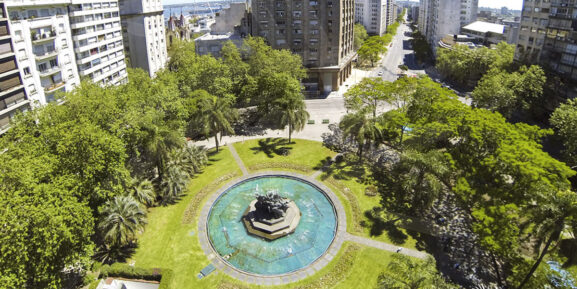Important Palaces of Montevideo
Important Palaces of Montevideo, a tour of the most luxurious and historic buildings in the city.
When you walk through this city, we recommend you keep your eyes open, since some of these buildings are camouflaged in the activities that they currently officiate.
As we mentioned in other notes, walking along Av. 18 de Julio is where you will find the largest number of attractions in the city of Montevideo. For this reason, we leave you this other note with more details!
Now, let’s see which are the most important Palaces in Montevideo:
Taranco Palace
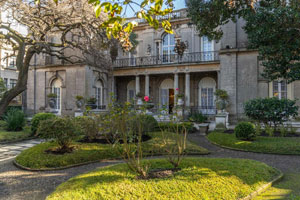 It is one of the most important historical buildings in Montevideo. It is located in the same place where the first theater of the city existed. Then, in 1972, it became the Headquarters of the Museum of Decorative Arts, the same activity it carries out today.
It is one of the most important historical buildings in Montevideo. It is located in the same place where the first theater of the city existed. Then, in 1972, it became the Headquarters of the Museum of Decorative Arts, the same activity it carries out today.
Historically, it witnessed the signing of the Montevideo Act, where the border differences between Argentina and Chile were settled through the Beagle Channel. For this reason, it is a building of great historical importance.
Its floors are made of oak in the Versailles style and its flower boxes and columns are made of marble from Genoa. The elements, for the most part, are made by the Maison Krieger in Paris.
Among its characteristics, the highlight is its triangle-shaped structure, in addition to its Louis XVI-style facades and the access to the building with a roundabout for the carriages of that time. Inside, it has an impressive marble staircase that leads to the different rooms inside.
The museum is open from Monday to Friday, 12:30 p.m. to 5:30 p.m. Here is its website for more information.
Estévez Palace
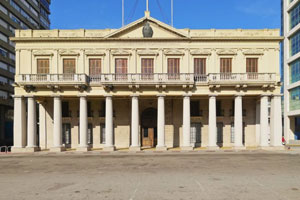 In 1873, a financier from Buenos Aires named Francisco Candelario Estévez acquired a huge property that was located where Florida and San José streets are today. There, he commissioned the construction of a palace that included a viewpoint on its roof, from where the horizon could be seen as far as the port.
In 1873, a financier from Buenos Aires named Francisco Candelario Estévez acquired a huge property that was located where Florida and San José streets are today. There, he commissioned the construction of a palace that included a viewpoint on its roof, from where the horizon could be seen as far as the port.
Its construction resulted in a house of Doric style mixed with colonial, in which Estévez and his wife lived. The ground floor was rented to the Italian Consulate and the establishment of several shops, while the house was located on the second floor.
In 1878, Estévez declared bankruptcy and this house passed into the hands of the Bank of London and Río de la Plata, to later be sold to the State and function as the headquarters of the Executive Power of Uruguay. In 1985, the offices of the Presidency moved to the Libertad Building, which is why the Estévez Palace began to be called the Independence Building and its function was reserved for museum and protocol activities.
Since 1999, it is also the headquarters of the Government House Museum and in 2009, its name was changed to the José Artigas Building, in honor of the national hero. You can visit the museum from Monday to Friday from 10 a.m. to 5 p.m. We leave you its profile here for more information.
Salvo Palace
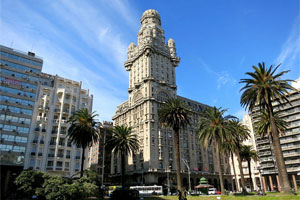 Located on the corner of Independence Square and July 18 Avenue, it is where the Bakery La Giralda was formerly located.
Located on the corner of Independence Square and July 18 Avenue, it is where the Bakery La Giralda was formerly located.
With an eclectic art deco style, it combines some Renaissance references with reminiscences of the Gothic style and some neoclassical touches. Its silhouette became an emblem of Montevideo and is a living memory of the most prosperous years of the early 20th century.
Currently, on its ground floor it has several shops and its upper floors are offices and homes.
Here we tell you much more about this beautiful building!
Heber Jackson Palace
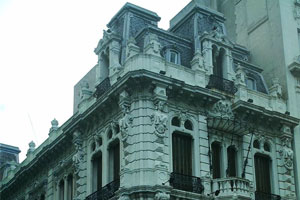 Exemplary of the historical-architectural heritage of Montevideo, it was originally built as a single-family home and business. Currently, it is the headquarters of a banking institution and the Gaucho and Coin Museum.
Exemplary of the historical-architectural heritage of Montevideo, it was originally built as a single-family home and business. Currently, it is the headquarters of a banking institution and the Gaucho and Coin Museum.
Eclectic in style, with French and Italian influences and neo-Renaissance characteristics, it has fabulous plasterwork, ceiling paintings, carpentry and mansards that crown the roof construction.
Piria Palace
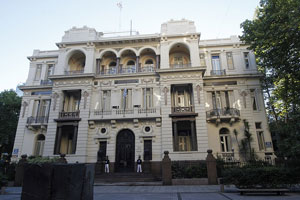 Current seat of the Supreme Court of Justice, it is one of the most important architectural emblems of Montevideo.
Current seat of the Supreme Court of Justice, it is one of the most important architectural emblems of Montevideo.
In 1975, it was declared a National Historical Monument, and its original creation was as the family residence of Francisco Piria and his wife in 1917.
Until 1933 it was inhabited by the Piria family, and in 1943 it became the property of President Juan José de Amézaga to be his private residence. In 1954, the State acquired this property and used the building to become the seat of the Supreme Court of Justice.
On its main façade you will find the Monument to Justice, as well as having esoteric symbols such as the oval figure in the hall on the ground floor, which is repeated in the basement and on the upper levels. The main staircase is made of marble, which branches off on the first floor.
Santos Palace
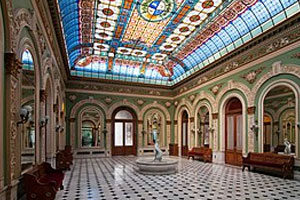 Building that has details of the Italian Renaissance, framed in classicism with a great fine artistic sense and luxury. The sumptuousness of this house is what will catch your attention. The best craftsmen were hired to work the different woods, the plasterwork of the friezes, the marbles, walls and ceilings.
Building that has details of the Italian Renaissance, framed in classicism with a great fine artistic sense and luxury. The sumptuousness of this house is what will catch your attention. The best craftsmen were hired to work the different woods, the plasterwork of the friezes, the marbles, walls and ceilings.
It was known as the “Palace-Museum” due to the amount of works of art and the luxury furniture that it has inside. From the outside, its simple and elegant lines stand out, being at the same level as the sidewalk on its side on July 18 Avenue, while its Cuareim street side has a basement of normal height and first floor, due to the slope of the same street.
It has a quadrangular plan that is located around two large patios, illuminated by skylights. One of them has a one-piece marble fountain with a delicate baroque sculpture of a child with a dolphin. Its several rooms have different characteristics from each other: “Ceremonial Hall” with pieces of President Santos’ furniture and an imposing ceiling; “Florentino Room”, with murals and paintings with the “grisaille” technique; and the “Dining Room” with period furniture and a huge collection of crockery from official meals.
Since 1955 it has served as the headquarters of the Ministry of Foreign Affairs and in 1975 it was declared a National Historic Heritage.
Legislative Palace
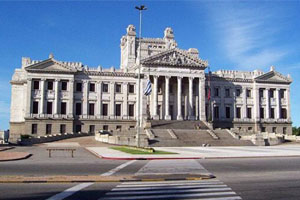 It is the Headquarters of the Legislative Power of Uruguay, where the General Assembly works, which is integrated with the Chamber of Senators and the House of Representatives.
It is the Headquarters of the Legislative Power of Uruguay, where the General Assembly works, which is integrated with the Chamber of Senators and the House of Representatives.
It was built between 1908 and 1925. Also known as the Palace of Laws, it is characterized by its eclectic Greco-Roman style. The facades, vaults, columns and interior walls are covered with different Uruguayan marbles.
We tell you much more about this beautiful building here!
Undoubtedly, it is worth the tour, since each of these palaces has a different characteristic and design from the rest. At the same time, you will get to know a little more about the city on the walk! To find out everything you can do in Montevideo, follow this link.
We invite you to join our Free Tours of Montevideo here and continue learning the details of this beautiful Uruguayan city.

